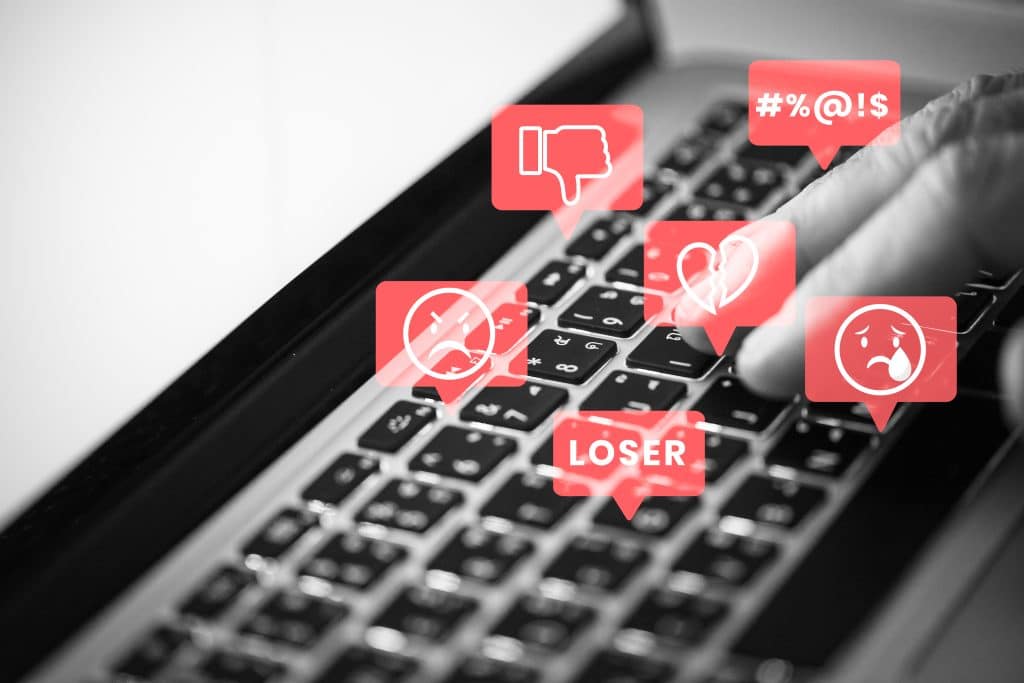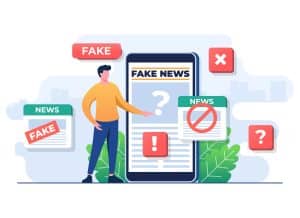Global disinformation control measures 2025: tackling misinformation

Anúncios
In a world flooded with information, Global disinformation has become a silent weapon, distorting truth and influencing opinions at an alarming scale.
Whether it’s false news, deepfakes, or manipulated data, misinformation travels faster than facts, reshaping narratives before we even question them.
Anúncios
Understanding how disinformation networks operate and how global efforts are evolving is key to protecting public trust and democracy.
Understanding Global Disinformation in a Complex Information Landscape
Effectively addressing Global disinformation begins with a solid understanding of its nature, mechanisms, and impact.
In an age where digital content moves at incredible speed, identifying what is true and what is manipulated is becoming increasingly difficult.
Disinformation is not random or accidental. It is structured, deliberate, and often designed to serve geopolitical, ideological, or financial goals.
Anúncios
What Distinguishes Disinformation from Misinformation?
While misinformation typically arises from unintentional errors or misinterpretations, Global disinformation involves the intentional creation and distribution of false or distorted content.
This type of content is used to deceive audiences, influence opinions, and disrupt social cohesion. It is often produced and spread by organized groups, including state actors and private entities, using coordinated methods across multiple platforms.
How Disinformation Exploits Emotions for Impact
Disinformation spreads more effectively when it provokes strong emotional responses. Content that stirs fear, outrage, or tribal loyalty is far more likely to be shared without verification.
Campaigns often use sensational language, shocking visuals, and polarizing themes to override critical thinking. This emotional engagement turns ordinary users into amplifiers of false information, increasing its reach and perceived legitimacy.
The Power of Hybrid Narratives in Global Disinformation
A common technique used in Global disinformation is blending factual elements with manipulated or false claims. This combination makes the narrative more believable and harder to refute.
For example, disinformation campaigns targeting conflict zones often include real images or events presented out of context, mixed with fabricated claims to reshape public perception.
These hybrid messages are particularly dangerous because they anchor the lie in a partial truth.
Manipulating the Information Ecosystem at Scale
Disinformation does not rely solely on the content itself. Its effectiveness depends on how information is circulated, prioritized, and monetized.
Algorithms on social media platforms tend to reward content that drives engagement, even if that content is harmful or inaccurate.
Moreover, advertising systems may inadvertently fund disinformation websites by placing ads on high-traffic but deceptive pages. These structural flaws are exploited by disinformation campaigns to expand their influence and profitability.
Why Understanding Is the First Step Toward Resilience
Understanding Global disinformation at a deeper level equips individuals, educators, governments, and platforms with the tools needed to build long-term resistance. It is not enough to simply flag false stories.
We must develop frameworks that support critical media skills, strengthen trust in reliable journalism, and promote regulatory environments that address the systemic incentives behind disinformation.
Disinformation is evolving rapidly, and so must our ability to recognize and respond to it. A well-informed public is the strongest defense against manipulation.
By understanding how these campaigns operate and why they succeed, we can move from passive consumers of content to active defenders of truth in the global information space.
Key Strategies to Control and Mitigate Global Disinformation

To effectively reduce the impact of Global disinformation, it is essential to adopt a combination of preventive and corrective strategies.
Disinformation campaigns today are not isolated events but part of coordinated systems that take advantage of digital tools, public polarization, and global communication gaps.
As such, control measures must be equally structured, collaborative, and adaptive to emerging threats.
Rather than relying on a single solution, successful approaches involve raising public awareness, improving education, enforcing regulation, and leveraging technology in ways that prioritize truth without undermining democratic freedoms.
Promoting Awareness Through Public Campaigns
Public awareness is the foundation of any effort to counter Global disinformation. Many people unknowingly contribute to the spread of false content because they lack the tools to evaluate what they see online.
Awareness campaigns help shift this behavior by increasing skepticism and promoting fact-checking habits.
These campaigns can take various formats, such as educational content on social media, partnerships with content creators and influencers, or local community workshops.
The goal is to make disinformation recognizable and equip individuals to question content before sharing it.
Campaigns informed by real-world examples, such as documented propaganda during armed conflicts, tend to be more effective because they ground abstract concepts in tangible threats.
This connection reinforces the urgency and relevance of media awareness for daily life and civic responsibility.
Building Resilience Through Media Literacy
Long-term resilience to Global disinformation depends on education. Media literacy programs that teach individuals how to verify sources, interpret content critically, and understand the motivations behind information are among the most powerful tools available.
Studies have shown that integrating these programs in school curricula increases the ability of students to detect misinformation and resist manipulation.
Outside of formal education, public institutions and NGOs can develop accessible digital resources, online courses, and mobile apps designed to promote critical thinking.
The objective is to turn passive consumers of information into active evaluators who seek context, question narratives, and share responsibly.
Enhancing Accuracy Through Fact-Checking Initiatives
Independent fact-checking organizations play a vital role in quickly identifying and correcting false claims. These groups monitor viral content, political statements, and media reports, publishing transparent corrections backed by verifiable data.
Their work is especially valuable during elections, crises, or pandemics, when the stakes are high and false information can spread rapidly.
Platforms can partner with these organizations to attach context or warnings to misleading content and promote verified information through recommendation systems.
Leveraging Collaboration Among Sectors
No single entity can fight Global disinformation alone. Collaborative efforts between governments, technology companies, research institutions, and civil society are essential.
By sharing expertise, data, and resources, stakeholders can create more effective and scalable interventions.
Successful initiatives often include joint task forces to track disinformation campaigns, coordinated responses to major incidents, and transnational agreements on standards for content moderation and transparency.
Examples from recent international operations show that when multiple actors work together, it is possible to disrupt highly coordinated propaganda efforts and protect vulnerable communities from manipulation.
Adapting Technology to Prioritize Credibility
Digital platforms play a central role in both the spread and the solution of Global disinformation.
Adjusting their algorithms to elevate credible sources and reduce the reach of manipulative content can shift the online information environment dramatically.
Machine learning tools are now capable of detecting patterns commonly found in disinformation, such as manipulated images, coordinated posting behavior, or emotionally charged language linked to known false narratives.
In addition, empowering users to report misleading content creates a bottom-up system of accountability that complements automated systems.
Transparency in how platforms moderate content also increases public trust and encourages ethical platform behavior.
Reinforcing Strategy Through Smart Regulation
Governmental policies are crucial for supporting disinformation control strategies, especially when it comes to transparency, accountability, and deterrence.
Well-crafted laws can discourage malicious behavior without infringing on freedom of expression.
Effective regulation includes the creation of independent oversight bodies, reporting obligations for platforms, and legal consequences for entities proven to disseminate false information deliberately.
Crucially, these regulations should be informed by experts in human rights, journalism, and technology to ensure balance and effectiveness.
Countries that have taken these steps are beginning to see positive results, particularly in contexts where disinformation had been used to deny war crimes, manipulate electoral processes, or suppress independent media.
The role of technology in combating disinformation

The role of technology in combating disinformation is significant and multifaceted. With the rise of digital communication, technology has become both a tool for spreading misinformation and a means to combat it.
One vital aspect is the use of artificial intelligence to detect false information. AI algorithms analyze vast amounts of data and can quickly identify patterns related to misinformation. This helps organizations respond faster to false claims.
Automated Fact-Checking
Automated systems can fact-check content in real time, providing users with accurate information at their fingertips. These systems often compare shared content against reliable databases, highlighting discrepancies instantly.
Content Moderation Tools
Many social media platforms have implemented content moderation tools that use machine learning to identify and flag suspicious posts.
These tools analyze user interactions and the credibility of the sources, promoting more reliable content.
- Community reporting: Users can report misinformation, allowing platforms to investigate and take action.
- Algorithm adjustments: Platforms can modify algorithms to reduce the visibility of content flagged as false.
- Transparency reports: Regular updates on content moderation efforts build user trust.
Moreover, technology enables the creation of verified news networks. Journalists and fact-checking organizations collaborate with tech companies to share accurate news.
This partnership amplifies the reach of credible information while drowning out false narratives.
Another aspect is the importance of media literacy tools. Technology facilitates access to educational resources that teach individuals how to critically evaluate sources.
By empowering users with knowledge, we enhance their ability to discern fact from fiction.
Overall, while technology presents challenges in the fight against disinformation, it also offers powerful tools to combat these threats.
With continuous advancements, technology will play an ever-increasing role in ensuring the information landscape remains credible and reliable.
Case studies of successful interventions
Exploring case studies of successful interventions provides valuable insights into effective strategies against disinformation. These real-world examples highlight how different approaches can effectively address misinformation in various contexts.
One notable intervention took place during an election campaign, where a coalition of NGOs, tech companies, and governments collaborated to counter false narratives.
They launched a comprehensive fact-checking initiative that swiftly identified and corrected false information circulating on social media.
A Successful Campaign in Action
This campaign utilized targeted advertisements to inform voters about reliable sources of information. By encouraging users to engage with accurate data, they saw a significant decrease in the spread of false claims.
Impact of Educational Programs
In another example, a grassroots effort focused on media literacy among young adults proved impactful. By integrating educational workshops in schools, organizers educated students on how to identify misleading information.
- Curriculum development: Workshops included hands-on activities and discussions.
- Peer-led initiatives: Students were empowered to teach their peers.
- Community engagement: Parents and local leaders participated in discussions.
This program cultivated critical thinking skills, enabling students to navigate the complex information landscape. As a result, survey results showed a marked improvement in participants’ ability to discern credible sources.
Additionally, international collaborations have also yielded strong results. Various countries have joined forces to share best practices and learn from each other’s experiences in tackling disinformation across borders.
This global perspective encourages more comprehensive approaches that consider cultural and regional nuances.
These case studies demonstrate that effective interventions require a combination of education, collaboration, and technology. They inspire hope, showing that with the right strategies, we can significantly reduce the impact of disinformation.
Future challenges and solutions for disinformation

As we look ahead, understanding the future challenges and solutions for disinformation is crucial. The landscape of information sharing continues to evolve rapidly, creating new obstacles and opportunities.
One major challenge is the emergence of deepfakes and AI-generated content. These technologies can create realistic yet fake videos or images that are difficult to distinguish from reality.
As misinformation becomes more convincing, it poses a significant risk to public trust.
Identifying and Combating Deepfakes
To tackle this issue, technology must continuously improve. Developers are working on solutions that use AI to detect manipulations in videos and images. By enhancing detection capabilities, we can help users identify what is real and what is not.
Strengthening Media Literacy
Another significant challenge is the need to improve media literacy among the general public. As misinformation grows, individuals must be equipped to analyze and question the information they encounter.
- Engaging educational programs: Schools and communities can offer workshops focused on critical thinking and source evaluation.
- Online resources: Websites and applications can provide tools for fact-checking and evaluating credibility.
- Social media initiatives: Platforms can promote media literacy campaigns to guide users in recognizing misinformation.
As we navigate this landscape, partnership among technology companies, educators, and policymakers will be essential. Collaborating to build a framework that promotes information integrity can create a more trustworthy online environment.
Lastly, regulatory measures can play a role in combating disinformation. Governments can explore creating guidelines that hold platforms accountable for disseminating false information while balancing the protection of free speech. This approach can foster trust and accountability in the digital space.
The road ahead will not be easy. However, creating robust solutions to face these challenges will empower individuals and communities. By embracing innovative technologies and promoting education, we can work together to create a more informed society.
In conclusion, combating disinformation is a challenging yet essential task. By understanding the various strategies and interventions that have proven successful, we can formulate a stronger response. Adapting to technological advancements, enhancing media literacy, and fostering collaboration among stakeholders will empower individuals and communities. Together, we can build a more informed society that confidently navigates the complex information landscape.
Conclusion: Strengthening Global Resilience Against Disinformation
The fight against Global disinformation is not a temporary battle, it is a continuous global challenge that requires vigilance, adaptability, and cooperation. As digital manipulation tactics evolve, so too must our collective response.
From deepfakes to coordinated propaganda campaigns, the threats we face today are more complex and dangerous than ever before.
One of the most effective tools we have is education. Promoting media literacy across all age groups strengthens society’s ability to recognize and reject misleading content.
When individuals are taught to question sources and analyze information critically, the impact of Global disinformation is significantly reduced. At the same time, investing in smarter technology is essential.
Artificial intelligence, automated fact-checking, and moderation algorithms are playing a growing role in identifying and neutralizing digital falsehoods before they spread.
But technology alone is not enough. A coordinated effort between governments, tech platforms, educators, journalists, and civil society organizations is vital.
These partnerships foster transparency, improve regulatory standards, and build long-term resilience.
For instance, efforts to expose Russian information operations in Ukraine as detailed in this in-depth report by Global Rights Compliance show how legal expertise, documentation, and media transparency can challenge state-sponsored disinformation effectively.
Similarly, studies like the Global Disinformation Index shed light on the financial infrastructure behind misinformation, revealing how ad-driven incentives often support the monetization of false content.
Understanding this economic dimension of Global disinformation adds a new layer to the problem—one that must be addressed through responsible advertising policies and greater accountability among digital platforms.
In the end, confronting Global disinformation is not about silencing voices; it’s about elevating truth, encouraging critical thinking, and protecting the integrity of global communication.
With consistent action, smarter tools, and informed communities, we can create a future where truth travels just as fast, and far, as the lies it aims to defeat.
Let this be a call to action. Whether through education, innovation, or advocacy, everyone has a role to play in the global movement for truth.
FAQ – Frequently Asked Questions about Global Disinformation Control Measures
What are global disinformation control measures?
These are strategies and practices aimed at identifying, combating, and reducing the spread of false information in the digital landscape.
How does technology help in fighting disinformation?
Technology, such as AI and automated fact-checking tools, assists in quickly identifying and flagging misleading information before it spreads.
Why is media literacy important in this context?
Media literacy empowers individuals to critically evaluate sources and discern between credible information and misinformation.
What role do collaborations play in combating disinformation?
Collaborations among tech companies, educators, and governments enhance the effectiveness of disinformation strategies and promote a unified approach.






